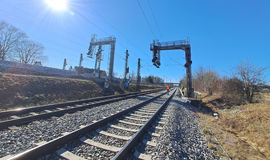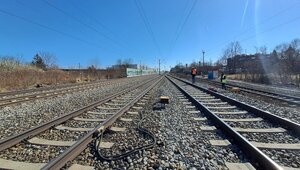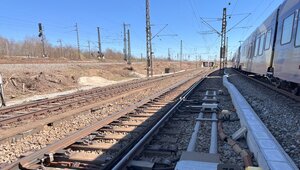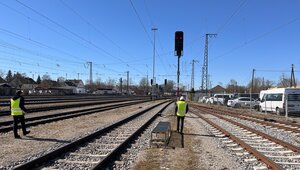
Site inspection in Munich North on the route of the Corridor Scandinavian-Mediterranean (ScanMed): Why a local view is essential
For the project Corridor ScanMed, the specialist planner team from Digitale Schiene Deutschland carried out a comprehensive site inspection in Munich North. The aim was to compare the conditions on site with the current planning documents, as conditions can change at short notice. Site inspections allow potential deviations to be recognised at an early stage. They are therefore an important part of any well-founded planning.
Planning documents: A solid basis, but not the whole picture
Planning documents form the basis for the planning of infrastructure projects, coordination between those involved in the project, legally certain documentation, on-site execution and much more. They ensure traceability, safety and coordination – and are therefore an indispensable part of the planning of infrastructure projects.
The current planning documents for the project Corridor ScanMed in Munich North were available to the specialist planner team. They carefully checked all relevant drawings and documents in advance. But no matter how up-to-date, detailed and meticulous the plans are: The reality on site can change due to short-term maintenance or conversion work. As such changes are often made at short notice, it is understandable that the changes may not always be immediately incorporated into the planning documents. This is also the case with Munich North: the deviations confirm to us that an on-site inspection is indispensable – especially when planning and implementing measures that require precise knowledge of the conditions. A site inspection allows these deviations to be identified and included in the planning documents.
Site inspections and their importance for infrastructure projects
A site inspection usually proceeds as follows: Prior to a site inspection, certain safety applications must first be submitted and authorised by the authorities. In addition, lookouts must be hired. These are people who, for example, warn everyone involved of approaching trains when working on the track. Only then can the relevant track section or system area be inspected by the project and specialist planner team. The conditions are then compared with the planning documents. Deviations are documented and open questions between the project participants are clarified. Following the site inspection, the documentation is analysed by the project teams, the noted deviations are checked and their impact on the further course of the project is determined.
Planning coordinator for digital as-built plans for control and safety technology (LST), Senay Dinler, summarises the importance of site inspections for infrastructure projects:

"The inspection showed us once again that although planning documents are an important basis, they cannot replace a personal impression. Deviations must be recognised at an early stage and planning documents adapted accordingly in order to ultimately ensure a smooth process."



